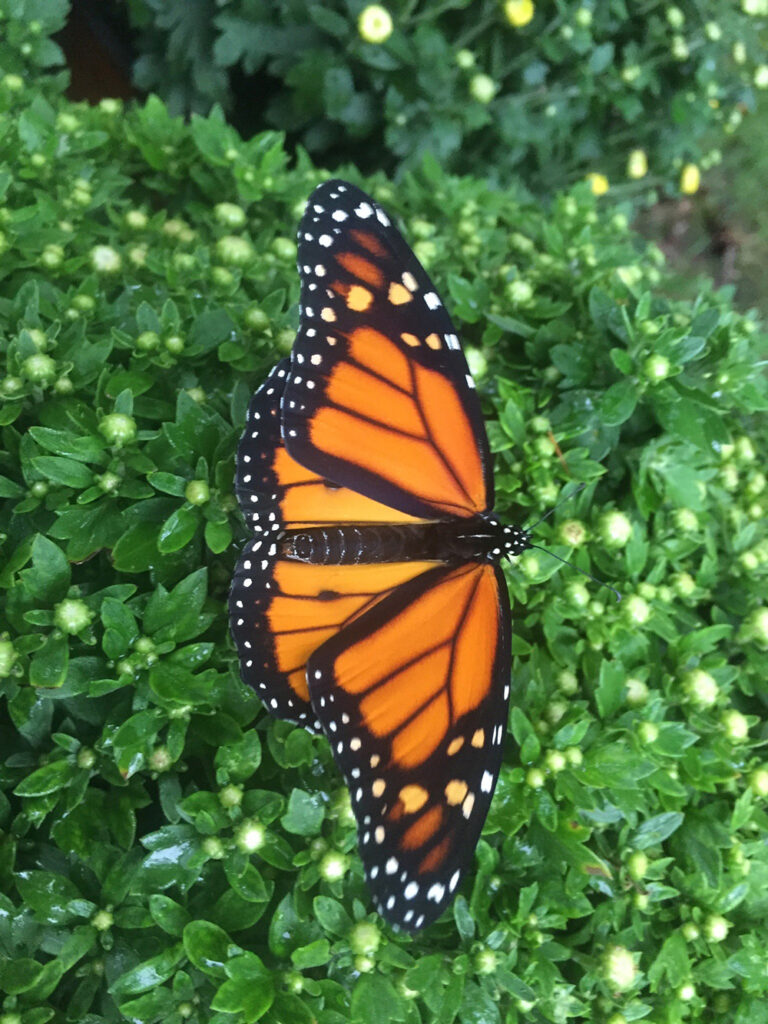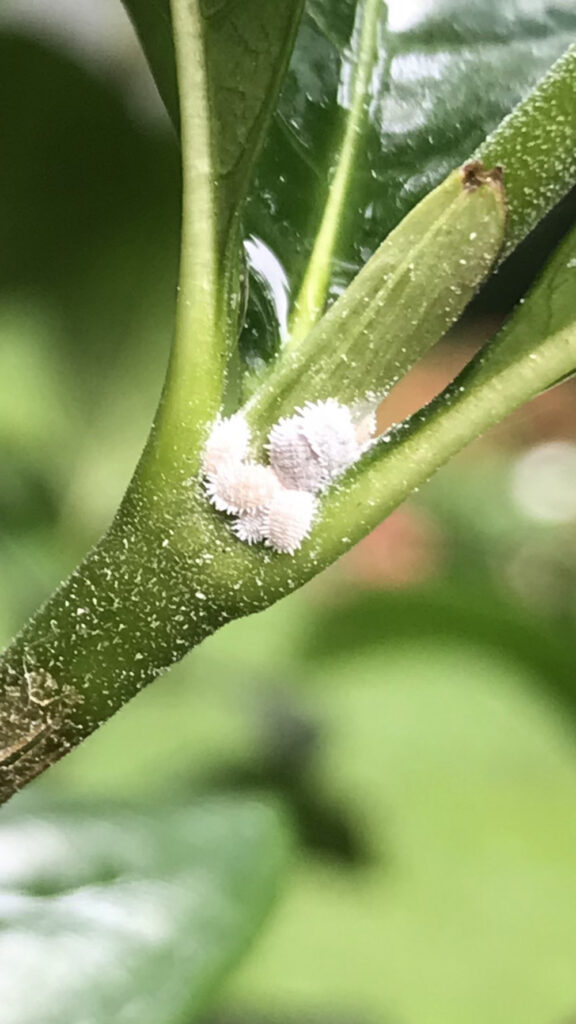Let It Grow
By Tammy Thornton
Often, our first inclination when we see a bug is to squash it. This is especially true when you see something crawling on a beloved flower or plant that you have nurtured and sweated over. Though not all creepy crawly things in the garden are necessarily “bad”, some of the most beneficial insects in the garden are downright ugly!
Ladybugs are among the most recognizable “good” insects, considered as farmers’ friends because of their voracious appetites for aphids. But would you recognize the larvae of ladybugs? These baby beetles eat even more aphids than their parents but look nothing like the familiar, cute ladybugs we know. Ladybug nymphs have scary looking spiky black bodies with orange markings. Though they look like something harmful, you only have to worry if you’re an aphid, spider mite, thrip, or mealybug.
Speaking of mealybugs, you may not even realize you have them until they have done extensive damage to your plants. At first glance, it might seem like your plant has a white fungus or cottony-looking growth, but grab your reading glasses and take a closer look. These tiny, wingless insects are definitely among the bad guys and can attack both indoor and outdoor plants. They pierce the plant and drink its sap causing wilted, curling, and yellowing leaves, often leaving behind a sticky excretion called honeydew that can lead to sooty mold on your plants. A blast of the hose may be enough to remove these bad bugs from your plants if you have a light infestation. You can also spray them with an insecticidal soap and remove the most infected parts of the plant.

After a diet of milkweed as a caterpillar, this male monarch is ready for some nectar. 
Mealybugs are one of the “bad guys” in the garden world.
Ants will be attracted to the sugary honeydew excretion but are not harmful to the plants. If you see ants crawling on your plants, take a closer look since their presence may indicate that one of the bad guys has been feeding on your plant and secreting its honeydew. If you have peonies, you have probably seen ants on the buds. No need for concern here, they are simply enjoying the nectar droplets on the buds and will not hurt the flower or plant.
Take a walk to the herb garden, and you may need to test your scruples. Were you looking forward to the dill, fennel, and parsley you were growing only to find tiny black caterpillars gnawing on them? Before you decide to kill these creatures and reclaim your crop, do some research. They are most likely the early instar larvae stage of black swallowtail butterflies. Could you imagine harming such beautiful creatures just to save your herbs? Simply outnumber the babies and plant extras for yourself. In later stages, the appearance of the larva of the black swallowtail greatly changes and resembles a monarch butterfly caterpillar. Make no mistake though, monarch caterpillars solely dine on milkweed plants.
Monarch butterflies enjoy the nectar of milkweed flowers and many other flowers, but their caterpillars will only be found on milkweed plants. You’ll need a keen eye to spot the tiny pearl-like eggs on the underside of the milkweed leaves. After about four days, the tiny caterpillar will emerge and begin devouring the milkweed. While you are watching the caterpillar chomp away, you may notice orange and black insects clustered on your milkweed. These are called, not surprisingly, milkweed bugs (someone must have taken the day off on naming day). Though they also enjoy eating milkweed and give a little competition to the monarch butterfly caterpillar, these bugs will not harm the caterpillars and are only there for the milkweed. In time, milkweed plants will spread so the milkweed bug may help keep them in check.
If you see a large pair of eyes staring at you in the garden, it just might be the spicebush caterpillar. Their actual eyes are much smaller than they appear. But the eyespots are an effective illusion to scare off predators. If you’ve ever seen one yourself, it’s the stuff of nightmares. In time, the caterpillar will make the amazing transformation to become the beautiful spicebush swallowtail butterfly. Hans Christian Andersen should have chosen this caterpillar as his muse, but The Ugly Spicebush Butterfly Caterpillar probably doesn’t roll off the tongue as easily as The Ugly Duckling.
The garden is full of good guys and bad guys, and some of the lines of good and evil become blurred. Though the assassin bug has a scary name, you want him on your side. Assassin bugs are predators of many different harmful pests in the garden, but keep your distance since they can deliver a nasty, painful sting that you won’t soon forget. You may see a tomato hornworm devouring your plant, but if it’s covered in tiny white ovals, nature is taking care of business for you. Those white ovals are wasp eggs, and the parasitic larvae will eat the caterpillar until it dies.
Time and space doesn’t permit us to go on, but the sometimes unseen and unknown world of beneficial insects like lacewings, ground beetles, and damsel bugs is fascinating. Of course, we all know the benefits of bees and other pollinators in the garden and rely on them for our food and plant life. Avoid chemicals and insecticides that won’t distinguish between good and bad bugs, but will also kill insects and pollinators that we depend upon.
Special thanks to one of our readers, Kathleen K., for this story idea. Shore Local News would love to hear your suggestions for article topics and would enjoy seeing your own gardens. Please send questions, comments, and pictures to: shorelocalgardener@gmail.com.
Tammy Thornton is a mom of four, a substitute teacher, and a Sunday school teacher. She is passionate about gardening and cooking, and loves the beach.






